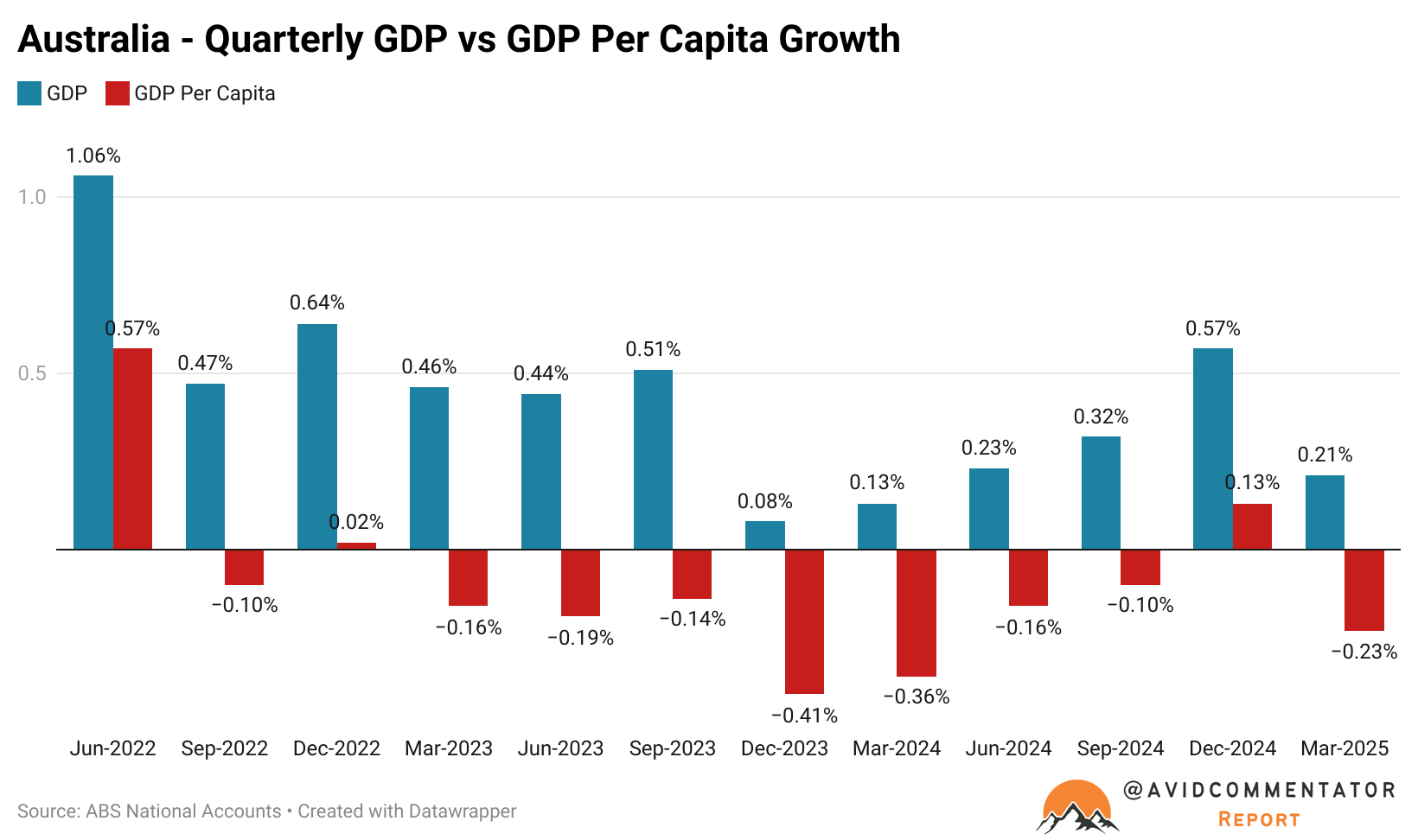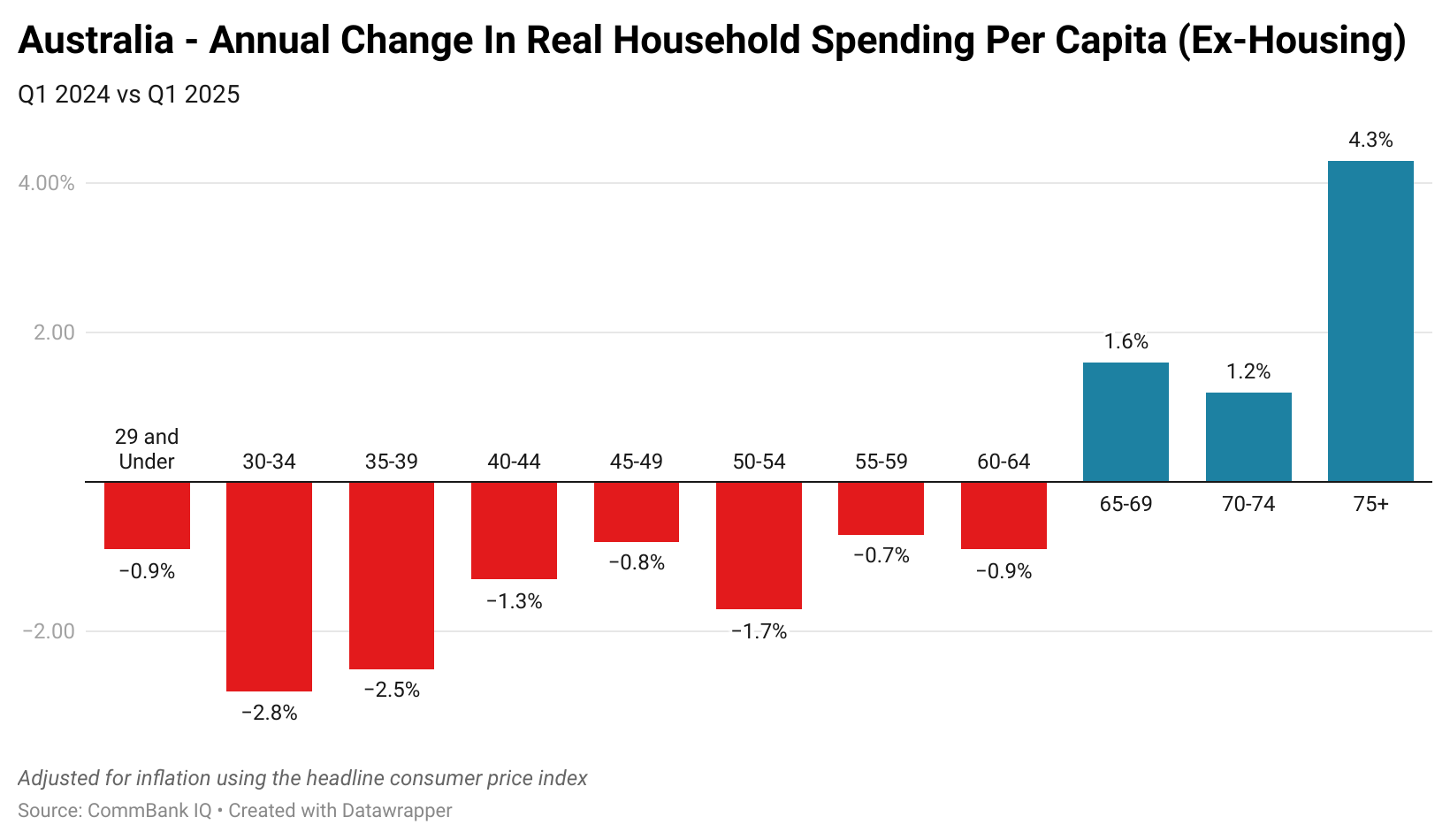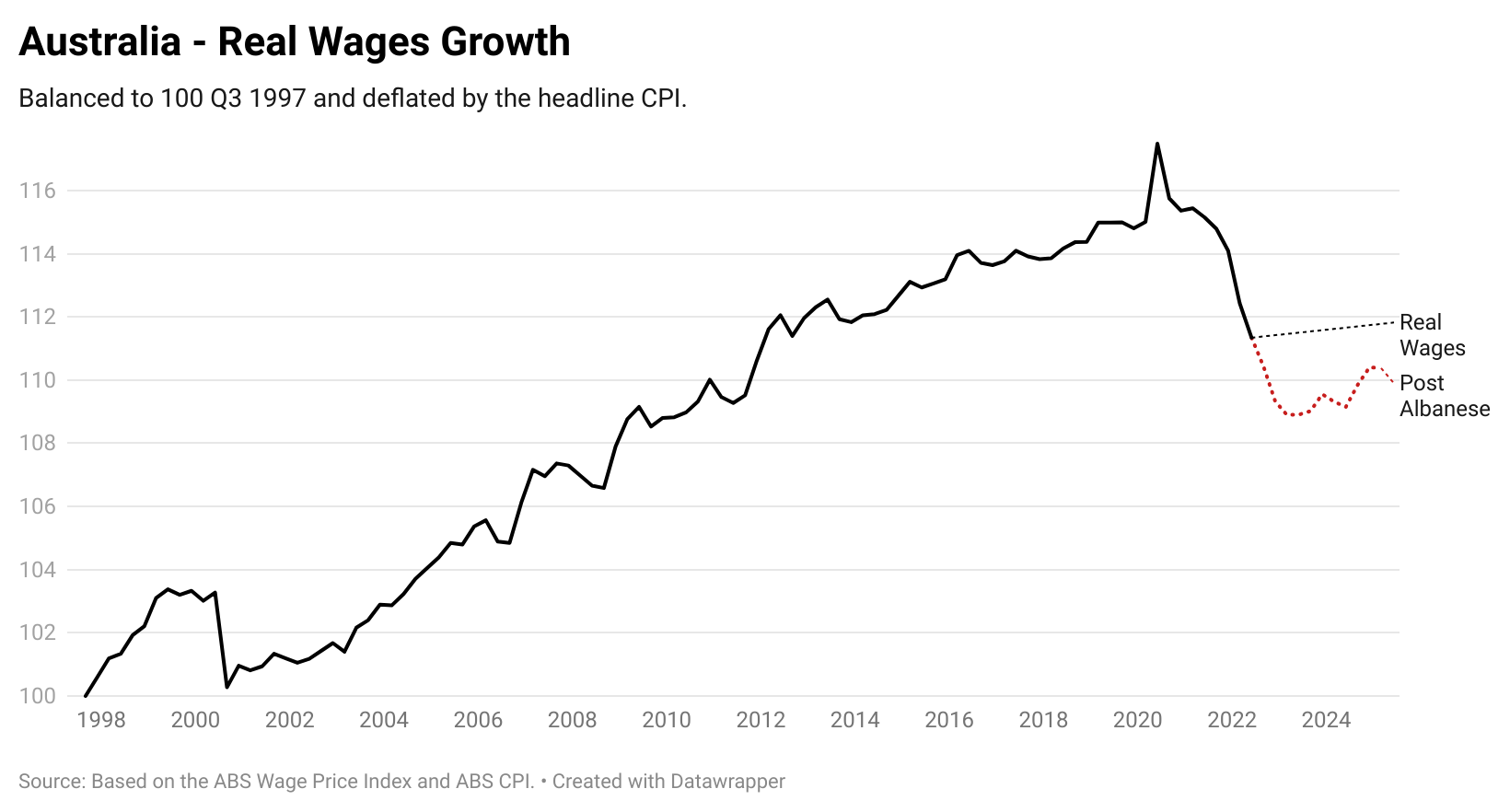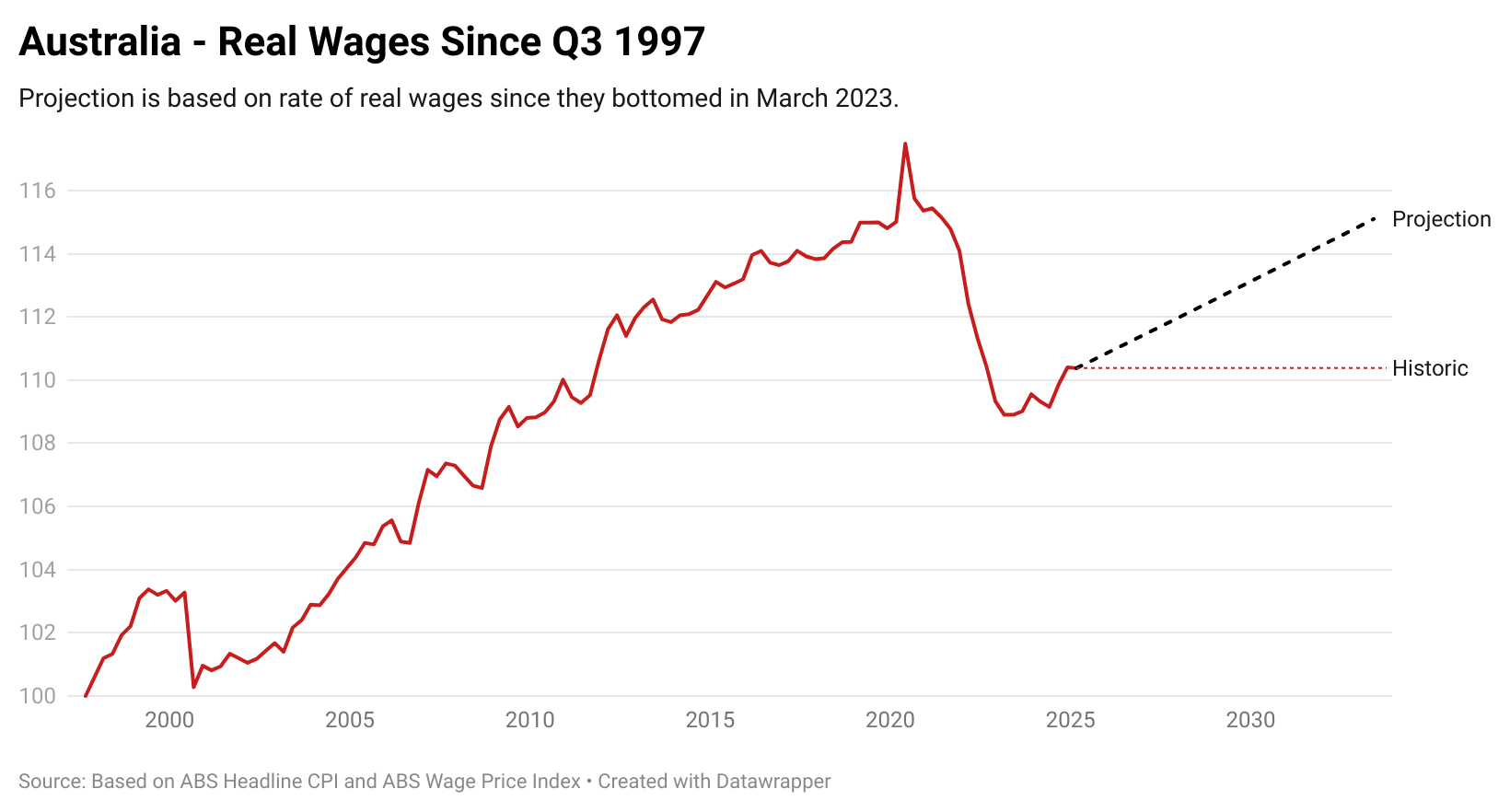At the recent federal election, the Albanese government was reelected with by far the best result for a first-term government in the nation’s post-World War 2 history.
Such was the failure of the Opposition, led by Peter Dutton, to present an alternative case for its leadership to the Australian people that the Coalition now holds the lowest number of lower house seats (proportionally) than at any time since Robert Menzies founded the Liberal Party.
Which raises an interesting question: if the Albanese government was reelected in such a landslide, how is the economy and individual household faring in the current environment, which is seen as challenging by millions of Australians?
So today we’ll be looking at half a dozen hard data metrics to assess the Albanese government’s performance on the economy.
- GDP and GDP per capita
- Real household consumption
- Real wages
GDP And GDP Per Capita
When it comes to the national accounts, the Albanese government has never had an especially favourable quarter on their watch.
The last quarter of decent growth was the June quarter of 2022, which the government shares with the Morrison government.
While migration has helped to keep headline GDP growth positive for all 11 quarters the Albanese government has been in power, the per capita figures reveal a contracting economy on this metric in 9 out of those 11 quarters

Real Household Consumption
While there are all manner of subpar performances on offer today, this is perhaps the most concerning. Real per capita consumption (ex-housing) is contracting for every age demographic in aggregate under 65, with the 30 to 34 and 35 to 39 age ranges faring the worst.
Part of what makes this so concerning is that it’s overwhelmingly not down to rate rises; by the time the two snapshots to compare the performance of spending were taken, the formal rate rise cycle was already over.
For much of the last three years, the RBA and rising rates have been blamed for the weakness of the consumer economy, but these figures suggest that there is far more to it than that.

Real Wages
When the Albanese government came to power in May 2022, it would be fair to say they inherited a mess.
Real wages had fallen dramatically not only from the pandemic-inflated highs but also from pre-COVID norms. At this time, real wages had already fallen to Q4 2011 levels.
Following the Albanese government’s election, they would continue to fall until the March quarter of 2023.

Since then, they have made something of a comeback, up by 1.36%.
However, it’s worth noting that this figure is distorted higher by the impact of electricity subsidies. If those were to be taken out of the equation, the total level of cumulative growth would be significantly lower.
But for the sake of argument, let’s run with those numbers and project them into the future.
If that same rate of growth were to be repeated into the future, it would be the June quarter of 2033 before the pre-Covid peak was reached. If the goal is shifted to the peak rate seen during the pandemic, it would take until the June quarter of 2037.

One can debate to what degree this is the Albanese government’s fault, but the reality unfortunately remains that even under artificially favourable conditions it will be the best part of a decade before we get back to where we were before Covid.
The Takeaway
While the electorate delivered the Albanese government a resounding and historic victory, one would be hard pressed to make a case that the result was driven by the state of the economy.
Instead, it increasingly appears that the federal political landscape resembling that of Victoria.
A land where the opposition is so ineffective and out of touch that even after major failings, the incumbent government is reelected.
While many on Australia’s right hoped that the Coalition’s defeat would be the wake-up call the Liberal Party needed to place the focus on the right issues to once again be competitive, so far, there is little, if any, sign of that.
Instead, the Coalition has shifted its position on key issues such as immigration to be closer to that of the Albanese government.
Despite the Albanese government getting a failing grade on its management of the economy, it will arguably have many more chances to try again because the Coalition attempts to extricate itself from the stupidity and electoral demographic-driven hole it has created for itself.